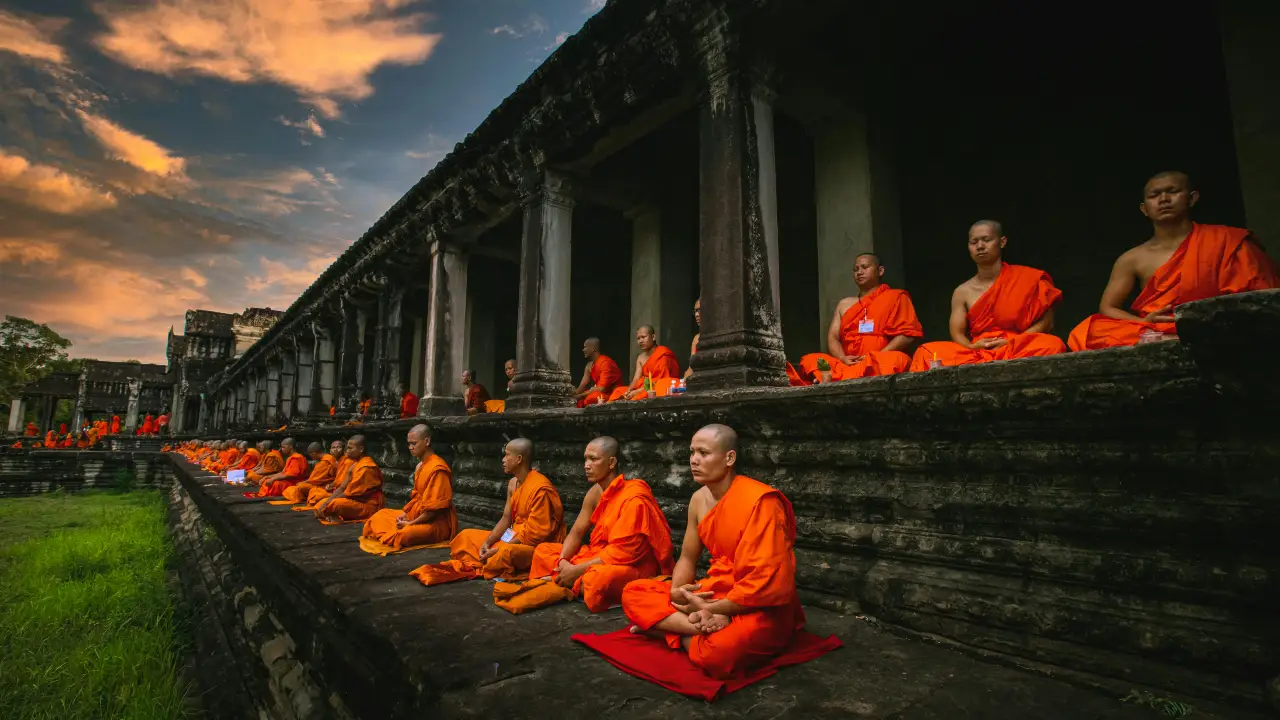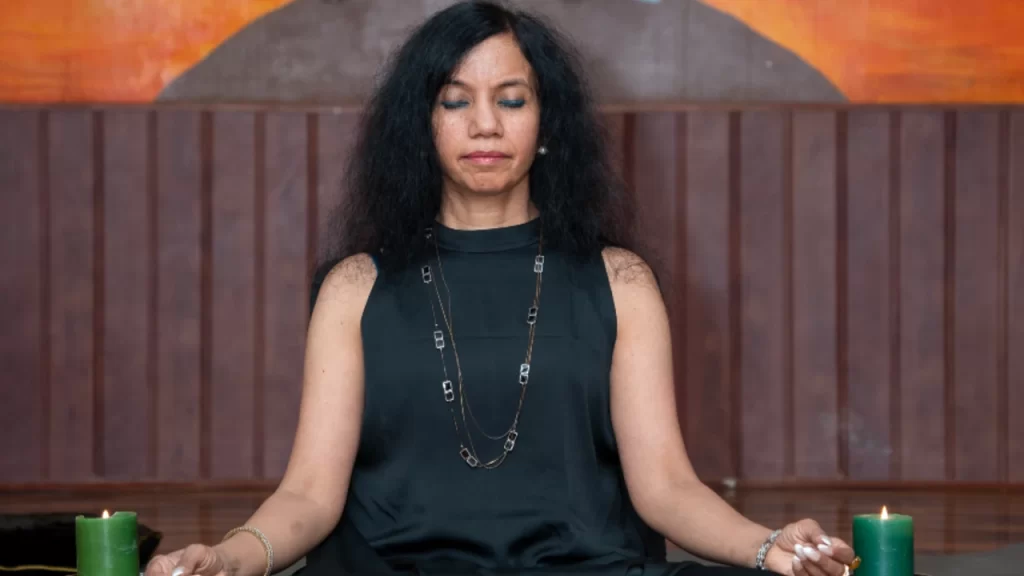Buddhist monk meditation has been a cornerstone of spiritual exercise for centuries, providing a route to internal peace, self-focus, and enlightenment. With its roots in historical traditions, it has emerge as a big a part of modern-day mindfulness and meditation practices. In this weblog, we’ll discover the middle principles, techniques, and practices of Buddhist monk meditation, and the way they can be incorporated into our daily lives.
1. What Are the Core Principles of Buddhist Meditation?
Buddhist meditation is deeply rooted inside the teachings of the Buddha, focusing at the cultivation of mindfulness, awareness, and compassion. The center concepts include:
Mindfulness (Sati): Being completely present inside the second, watching thoughts and emotions without judgment.
Concentration (Samadhi): Developing deep consciousness and mental clarity.
Ethical Conduct (Sila): Living a lifestyles of morality and integrity, which is critical for mental clarity.
Wisdom (Panna): Understanding the character of truth, impermanence, and the interconnection of all beings.
These standards manual practitioners in their adventure closer to enlightenment, fostering a feel of inner peace and expertise.
2. How Does Buddhist Meditation Differ From Other Forms of Meditation?
Buddhist meditation differs from different forms of meditation mostly in its dreams and methods:
Techniques: Buddhist meditation frequently entails particular practices like mindfulness and awareness, which can be awesome from techniques like guided visualization or mantra repetition found in different traditions.
Integration with Ethics: Buddhist meditation is carefully tied to ethical dwelling, with a strong emphasis on compassion and non-harming, which might not be a focal point in different meditation practices
Purpose: While many meditation practices focus on rest and pressure reduction, Buddhist meditation goals for enlightenment and liberation from struggling.
3. What Are the Common Buddhist Meditation Techniques Practiced through Monks?
Mindfulness Meditation (Vipassana):
Buddhist monks practice numerous meditation techniques, each serving a selected cause on the route to enlightenment:
Vipassana, or insight meditation, is one of the maximum famous Buddhist meditation strategies. It involves staring at the breath, physical sensations, mind, and feelings without attachment or judgment. This exercise helps to expand awareness and perception into the nature of truth, recognizing the impermanent and interconnected nature of all matters.
Concentration Meditation (Samatha):
Samatha meditation focuses on calming the mind thru deep attention. Practitioners frequently focus on a unmarried item, along with the breath, a mantra, or a candle flame. This practice stabilizes the thoughts, making it greater receptive to deeper insights at some stage in Vipassana meditation.
Loving-Kindness Meditation (Metta):
Metta meditation cultivates emotions of affection, compassion, and goodwill in the direction of oneself and others. Practitioners repeat phrases like “May I be glad, may I be healthful, may also I be at peace,” progressively extending those needs to all beings. This practice fosters a feel of standard compassion and decreases feelings of anger and resentment.
4. What Role Does Chanting Play in Buddhist Monk Meditation?
Chanting is an necessary a part of Buddhist monk meditation, serving as a method to consciousness the thoughts and connect to the spiritual teachings of the Buddha. The repetitive nature of chanting allows to calm the thoughts, making it simpler to go into a meditative kingdom. It also reinforces the teachings, as many chants are derived from sacred texts and mantras.
In addition to its meditative blessings, chanting can create an experience of network and shared reason amongst practitioners, whether or not in a monastery or a meditation centre in Delhi.
For Buddhist priests, meditation isn’t always confined to a specific time or place but is integrated into each factor of each day lifestyles. Here’s how:
5. How Do Monks Integrate Buddhist Meditation into Daily Life?
Mindful Eating: Monks exercise mindfulness at the same time as ingesting, absolutely appreciating the food and its source.
This integration of meditation into daily activities enables clergymen maintain a regular state of mindfulness and focus, cultivating a deep feel of internal peace.
Daily Chores: Whether sweeping the temple grounds or washing dishes, priests method each assignment with mindfulness, turning mundane sports into meditative practices.
6. What Are the Benefits of Buddhist Meditation According to Monks?
Walking Meditation: This includes slow, deliberate strolling with full awareness of every step, regularly practiced among seated meditation classes
Mental Clarity: Regular meditation sharpens the thoughts, improving attention and awareness.
Buddhist meditation offers numerous blessings, as located by means of priests who have dedicated their lives to this exercise:
Emotional Stability: Meditation fosters a relaxed and balanced thoughts, reducing tension, stress, and poor emotions.
Spiritual Growth: By cultivating mindfulness and compassion, practitioners progress on their religious direction, transferring in the direction of enlightenment.
Physical Health: Meditation has been proven to lessen stress, lower blood pressure, and improve universal bodily health.
Monks additionally emphasize the non secular blessings of meditation, along with a deeper reference to oneself and the universe, and the improvement of expertise and compassion.
7. How Can Beginners Start Practicing Buddhist Meditation?
For novices, starting a Buddhist meditation exercise may additionally seem daunting, however it can be easy with the right technique:
Start with Mindfulness: Begin with simple mindfulness meditation, focusing at the breath and watching mind without judgment.
Create a Routine: Consistency is key. Start with quick daily classes, step by step growing the length as you turn out to be extra cushty.
Seek Guidance: Joining a meditation center in Delhi or attending yoga classes in Delhi can provide precious guidance and support from skilled practitioners.
Incorporate Ethics: Alongside meditation, practice moral residing by cultivating kindness, honesty, and compassion on your everyday interactions.
Meditation, specifically at the extent practiced by clergymen, isn’t without its challenges:
8. What Are the Challenges Faced During Buddhist Monk Meditation?
Restlessness: The mind clearly resists stillness, main to distractions and restlessness all through meditation.
Physical Discomfort: Long intervals of sitting can motive pain or ache, which can be a giant venture for practitioners.
Emotional Turbulence: Deep meditation can deliver unresolved feelings to the floor, which can be difficult to stand.
In some traditions, the artwork is also used as a focus for meditation, helping to deepen concentration and connection with the non secular teachings.
9. What Is the Significance of Meditating Monk Art in Buddhist Meditation?
Meditating monk art work, often visible in statues and art work, holds deep symbolic importance in Buddhist meditation. These artistic endeavors function visual representations of the ideals of calm, concentration, and enlightenment. For practitioners, they act as a supply of inspiration and a reminder of the peace and tranquility that may be completed thru meditation.
10. How Can Modern Practitioners Incorporate Buddhist Monk Meditation in Urban Life?
In today’s fast-paced city lifestyles, incorporating Buddhist monk meditation can be challenging but quite rewarding. Here’s how:
Create a Sacred Space: Dedicate a quiet corner of your home for meditation, where you may retreat from the hustle and bustle of daily existence.
Practice Mindfulness in Daily Activities: Whether commuting, working, or exercise, convey mindfulness into your day by day recurring, reworking ordinary moments into opportunities for meditation.
Join a Community: Engage with like-minded individuals through yoga training, meditation centres, or spiritual groups. This can provide assist and encouragement in your meditation adventure.
Balance Modern Life with Ancient Practices: Integrate meditation with other wellbeing practices like yoga, crystal remedy, or ancestral restoration, growing a holistic method to fitness and properly-being.
By making meditation part of your each day routine, you may experience the profound benefits of this historical exercise, even within the midst of a hectic city lifestyles.







Leave a Reply